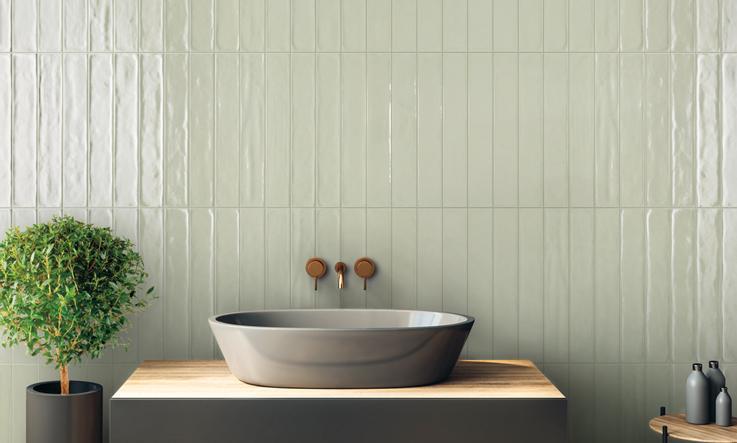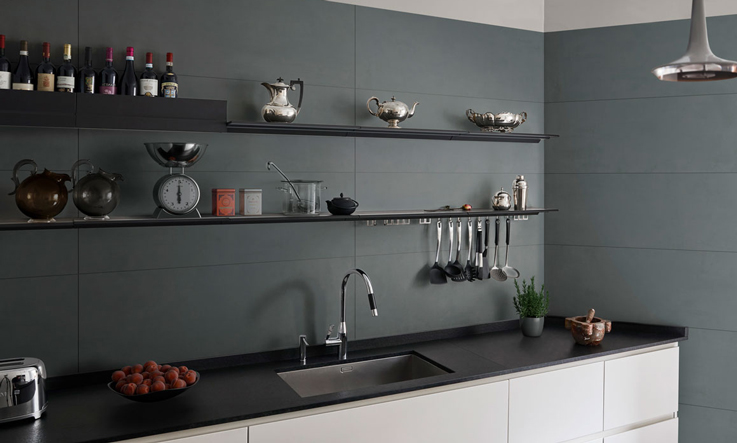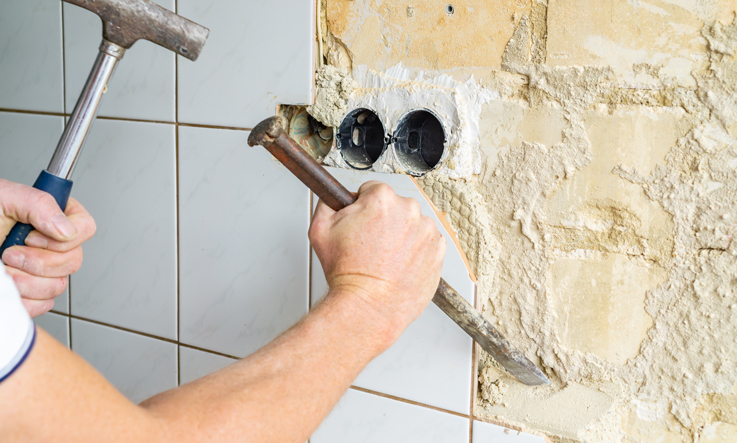
Low-thickness tiles: a valid solution for renovations and DIY
When we speak of low-thickness stoneware, and more generally of low-thickness tiles for floors and walls, we usually refer to all those tiles that are thinner than standard tiles.
Characteristics of low-thickness coverings

The thickness of standard tiles is about 1 cm, with variations ranging from 9 to 12 mm. These characteristics are a consequence of the optimization of traditional production processes, in order to guarantee a technically excellent product.
In recent years, the technological development of the ceramic sector has brought such a refinement of techniques, that many companies are now able to produce tiles, with thickness ranging from 3.5 to 6 mm. In addition, digital technology is able to reproduce graphics, designs and textures on thin stoneware with the same quality that we generally find in traditional tiles. From a constitutive point of view, low-thickness tiles keep many of the technical characteristics of porcelain stoneware, such as waterproofing, easy cleaning, resistance to scratches and surface abrasion, thus they have lower breaking loads.
Even if we don’t want to give you in-depth technical information or force you to find you high school Physics book, you should know that the thickness of the tiles affects exponentially the value of the breaking modulus. But what exactly does this mean in practical terms? If you are thinking of using low-thickness tiles for wall cladding, you don't have to worry about this; in the case of flooring, however, greater caution is required in the use of low-thickness tiles, especially in the case of High client density environments or industrial/commercial areas .
Therefore, if you are thinking of redoing the floors of your home using thin porcelain stoneware, you do not run any risk (unless you plan to install soapstone stoves that normally have a considerable weight), if instead you want to install these products in industrial or commercial areas, where even heavy trucks usually transit or park, we suggest you to consider standard thickness slabs.
Main advantages of thin coverings for home renovations

- Zero demolition and disposal costs, thanks to the possibility of covering existing walls and floors without demolishing them.
- Facilitated installation thanks to the lower weight of the material which makes it also suitable for DIYers, especially when using small or medium format tiles
- In the case of floor installation, the low weight makes it possible to apply low-thickness tiles even on thin screeds, for example in the case of renovating old houses.
- In ultra-thin versions there is no need to cut existing doors
- It is a sustainable product, since the reduction in thickness determines a considerable decrease of the environmental impact in terms of energy consumption, raw materials, packaging materials and transport.
- Reduced costs and greater speed of installation
Since low-thickness floors are the result of advanced technological processes, they are available on the market at higher average prices, compared to traditional tiles. When purchasing tiles, it is always good to keep in mind the cost of the installation, so that you can get a clear picture of what the overall cost of the entire renovation will be.